Lab-Grown Diamonds vs. Natural Diamonds: What’s the Real Difference?
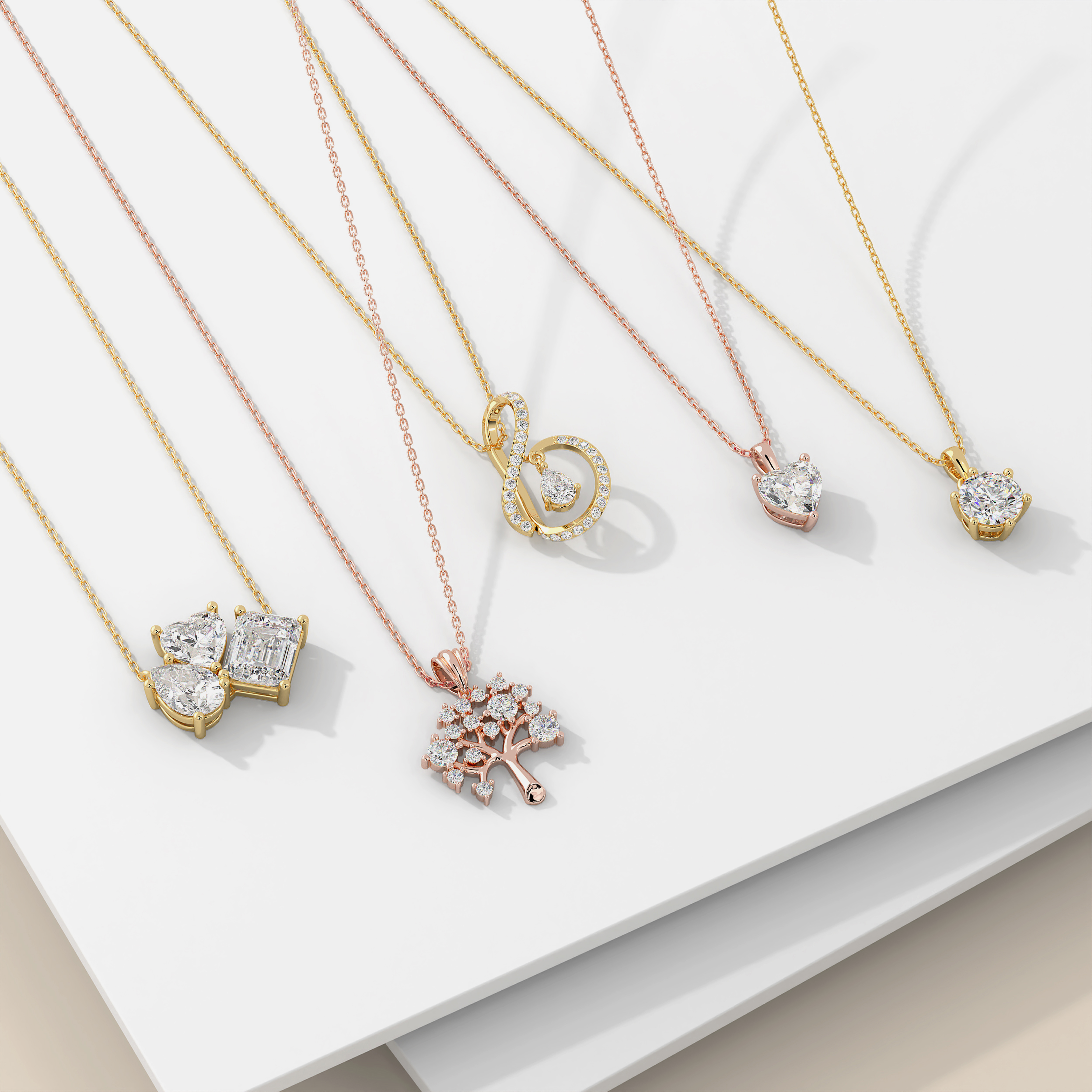
From the newlyweds to people accumulating wealth, the realm of fine jewellery is experiencing a stunning shift. For centuries, diamonds were the most prestigious gemstone to own and were received only via the strenuous and incessant mining process. But, today, one can avail diamonds via a different means, the lab-grown diamond. This now leaves the buyers pondering over the most crucial question of the century: What is the actual difference between a lab grown diamond jewellery and a natural diamond jewellery?
Being the artisans and the experts in the field, we at Caratbazaar have dealt and counseled numerous clients with this very question. Every diamond's tale is different, and in this case, its metamorphosis from carbon to carat is the distinguishing factor. The answer to this question does not lie in the choice of “better”, This guide will examine the science and ethics, as well as the relative financial value of each item, to arm you with the knowledge which will help you arrive at a more informed decision that resonates with your ethics, finances, and emotions. Starting with this statement lab-grown diamonds are “real”. They do not fall under the banner of simulants, or alternatives like moissanite or cubic zirconia. They do undergo the same process of chemical, physical, and optical tests as the natural one.
What Are Natural Diamonds? The Earth’s Ancient Treasures
The story and the power of nature are captured beautifully in the natural diamond. A natural diamond forms about 150 to 200 kilometers down in the Earth’s mantle in the form of a carbon atom. The diamond cube forms under extreme pressure of over 50,000 times the atmosphere and over 1,000c of heat.
Volcanic eruptions form forms a type of rock called kimberlite and carries the the diamond to the surface. The diamond goes through a long process from Earth to the jewelry store. This process involves the diamond going through Extensive mining, sorting, polishing and cutting. This extensive process and raw nature of long natural amidst epic geological journey add to their allure. They have long been prized as luxury jewelry and are a timeless symbol of enduring love.
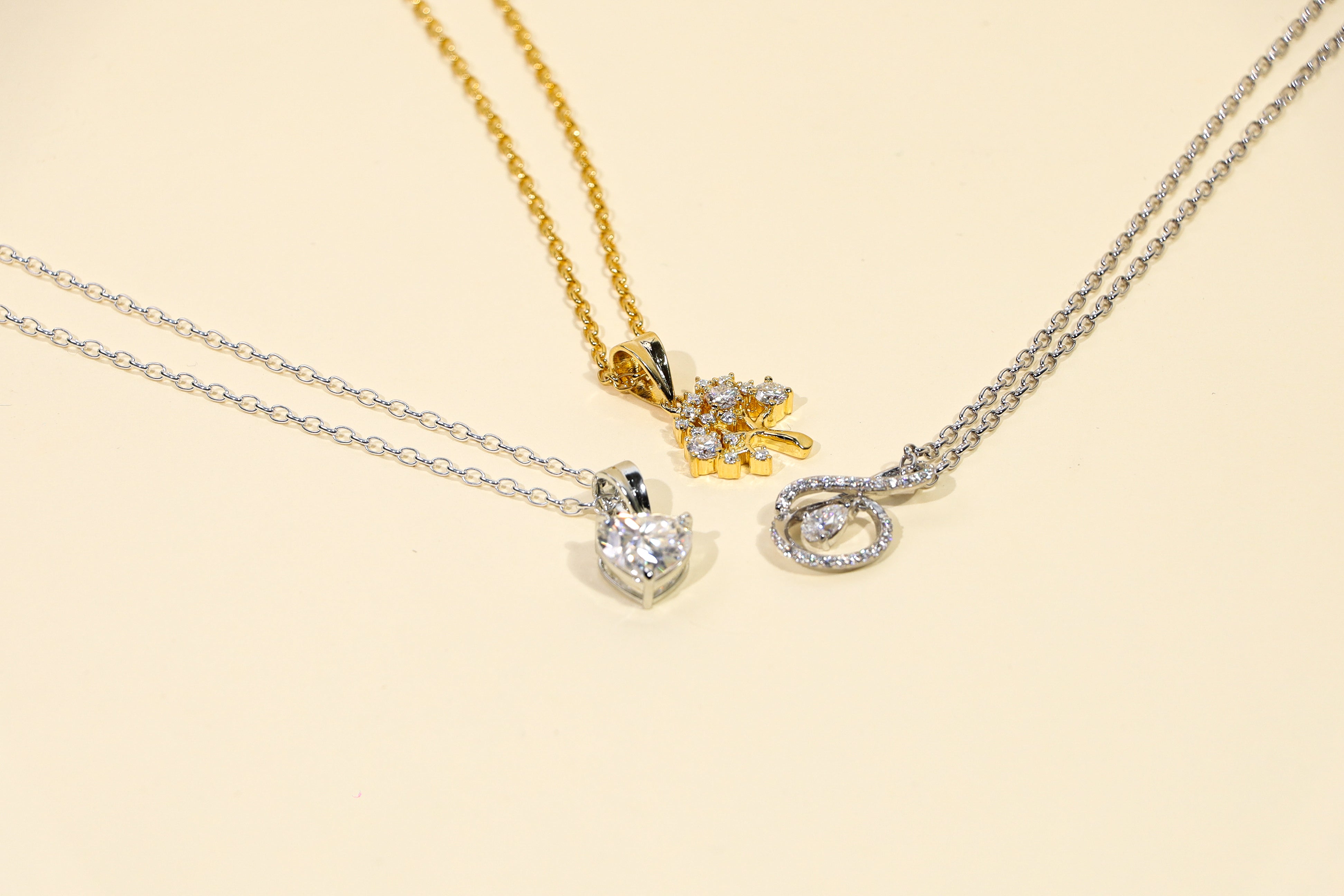
What Are Lab Grown Diamonds? The Marvel of Modern Science
Lab grown diamond Pendants or cultured diamonds pendants are diamonds of advanced technology we humans made. They’re not fakes and are in fact, diamonds created in labs where the natural processes of diamond formation are simulated.
Picture this: The ice from your freezer and ice from a glacier are both made of H₂O. One was formed in nature over many years and the other in a few. Lab-grown diamonds follow the same principle: they are made from carbon and share the same crystal lattice structure with natural diamonds.
What are the Two Main Techniques Used in Lab-Grown Diamonds Production?
A laboratory gem-quality diamond can be produced through two primary methods, as scientists have perfected techniques for both.
1. HPHT (High Pressure/High Temperature)
This technique is the closest to the natural diamond formation process occurring far beneath the earth's crust.
· The Process: A specimen is created using a diamond “seed” which is a minuscule fragment of a diamond placed into a chamber containing a pure carbon source, typically solid graphite.
· The Transformation: The chamber’s temperature is brought up to approximately 1500 degrees Celsius. This also results in the chamber being subjected to significant pressure of around 1.5 million pounds per square inch.
· The Result: This results in the carbon source melting which further crystallizes around the diamond seed. The diamond is rough in shape and takes several weeks to grow.
2. CVD (Chemical Vapor Deposition)
This is a more advanced technique, often referred to as 3D printing in molecular form.
· The Process: A diamond seed is placed inside a sealed vacuum chamber.
· The Transformation: The vacuum chamber is then filled with carbon-rich gas (methane) and is subsequently heated. Methane’s gaseous atoms are broken down to their pure carbon components using microwaves, which allows them to bond with the diamond seed.
The Outcome: Acquiring a vertically oriented diamond layer results in a well-structured gem. This method is preferred when acquiring diamonds of a finer quality.
In both methods, the last product is a raw diamond, which in both cases, needs to be skillfully carved and polished to bring out its true shine and fire, the same way a mined diamond is processed.
The Showdown Comparison: Looking At the Key Differences At A Glance
While the outer appearance may be the same, the differences in the origin give rise to some important factors which as a customer, will matter to you.
Origin and Formation: Earth Versus Laboratory
This is indeed the most important differentiating factor.
· Natural Diamonds: These are a product of geological processes that took billions of years, and then they are extracted from the earth. They come with a blossom of history and scarcity.
· Lab Grown Diamonds: These are produced with human technology and take weeks or monh. These come with a story of innovation, green, or environment, and great of sustainability.
Chemical Composition and Physical Properties: Differences Are Noted, Yet, they are the Same.
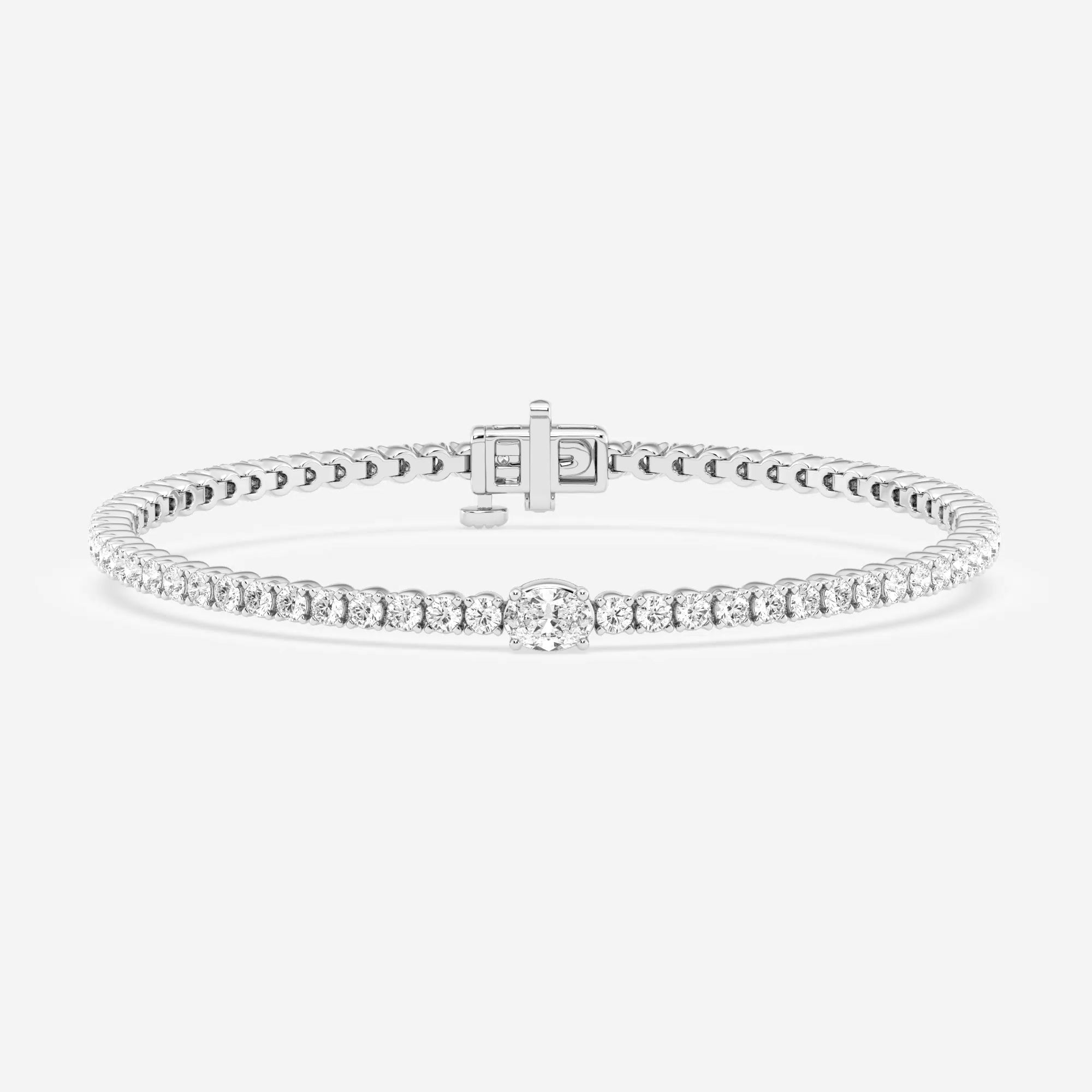
This can not be emphasized enough. Lab grown diamond bracelets are not “like” diamonds bracelets, they are indeed diamonds bracelets.
1. Both are made of pure carbon that has crystallized in an isometric cubic system.
2. Both score a perfect mark of 10 on the Mohs scale of hardness, marking them as the hardest best-known substance on earth, and very durable for everyday wear.
3. Optical Properties: Both have the same refractive index and dispersion (2.42 and 0.044 respectively). These are the scientific measures for their signature sparkle (brilliance) and fire (the rainbow flashes of light).
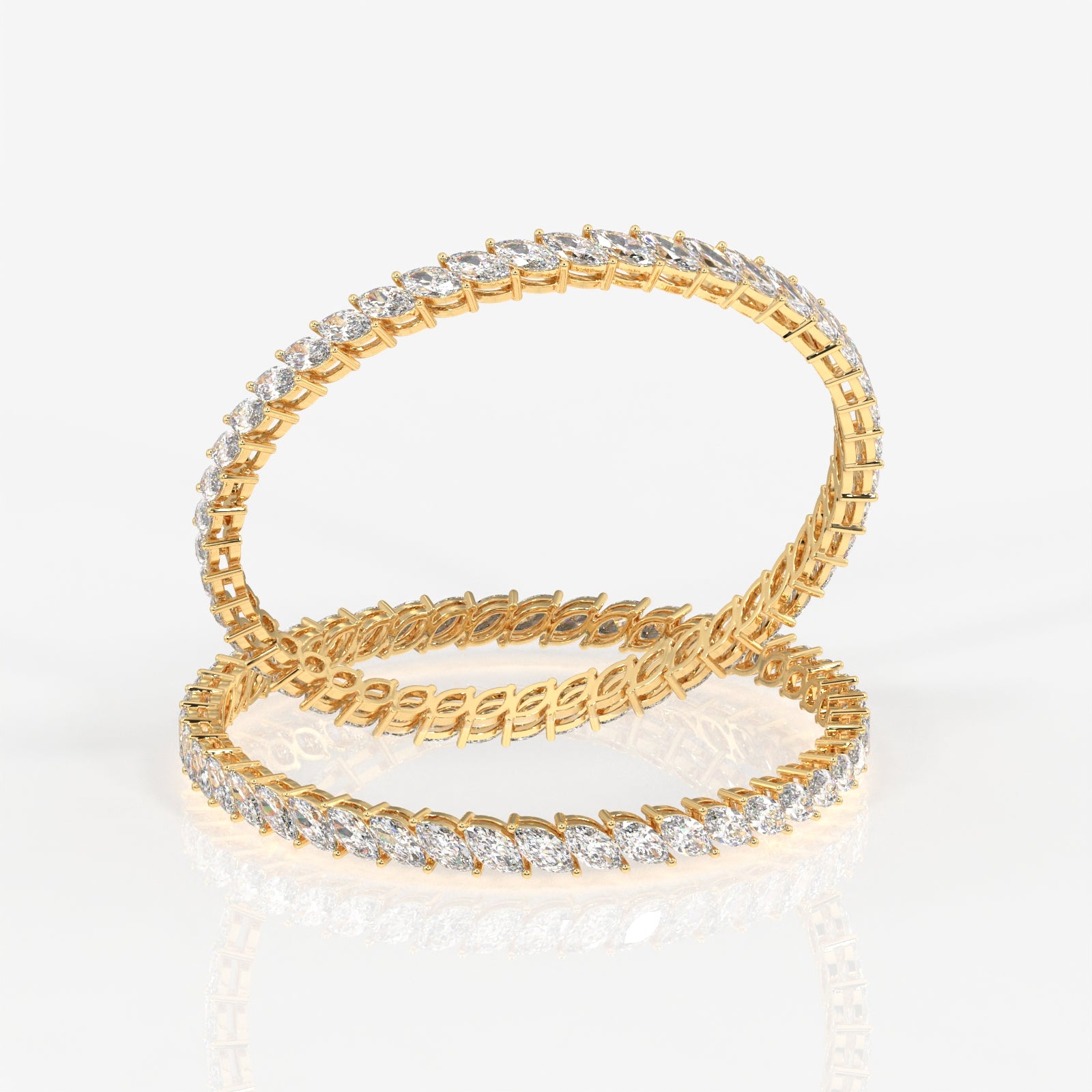
Even a skilled gemologist cannot identify lab grown diamond bangles and a natural diamond bangle with the naked eye. A trained gemologist can only discern a diamond's nature with specialized equipment which detects growth patterns and trace element differences.
The 4Cs: Cut, Color, Clarity, and Carat
Leading gemological institutes like the GIA (Gemological Institute of America) and IGI (International Gemological Institute) grade both types of diamonds on the exact same scale.
· Cut: The sparkling quality of the diamond is a direct result of the craftsmanship of the cutter. This is equally important for both lab-grown and natural diamonds.
· Color: The GIA grades color from D (colorless) to Z (light yellow/brown). Lab-grown diamonds are often produced to be of very high color grades (D, E, F) because the lab environment is easier to control.
· Clarity: This is the measurement of internal and surface flaws (blemishes). Lab-grown diamonds often have a very high clarity grades (VVS, VS) due to the environment being controlled.
· Carat: Refers to the weight of the diamond. The distinguishing factor here is not the weight but the price tag attached to it.
The Price Point: This Is What Sets Lab Diamonds Apart
For buyers, this is often the most crucial consideration. Lab diamonds are far more economical than natural diamonds, which are often priced 50-80% lower.
The natural diamond supply chain is capital-intensive, with high costs coming from exploration, extensive mining, transportation, and a multi-layered distribution network. Lab grown diamonds have a simpler and less capital-intensive supply chain.
Real-World Example: A 1.5 carat round natural diamond competes with a price range of ₹800,000 - ₹1,200,000. In comparison, a lab-grown diamond with identical specs is priced around ₹150,000 - ₹250,000. This allows for purchasing a higher quality or larger natural diamond, for the price of a lab diamond, or spending more on a custom intricately designed setting.
Environmental and Ethical Considerations: A Conscientious Issue
The diamond industry is well-known for being associated with unethical practices. A lab-grown diamond marries modern values with tradition.
· Natural Diamonds: The industry continues to grapple with the issue of conflict diamonds, even with the Kimberley Process in place. From an environmental perspective, open-pit mining leads to the removal of vast amounts of surface soil and rock, and the creation of gigantic wastelands; disrupts ecological systems; and shapeshifts the Earth's crust while requiring enormous amounts of water and energy.
· Lab Grown Diamonds: Lab-created ones are and will always be conflict-free. They are also friendlier to the environment. Although the development stage demands a considerable amount of energy, it is much less land and water hungry compared to traditional diamond mining. In addition, several growers are doing their best to shift to renewable energy, thus making the process even greener.
Resale Value & Long-Term Investment
This is an area where ambiguity is the enemy.
· Natural Diamonds: Natural diamonds, unlike synthetic ones, have a well-established but often poorly understood secondary market. Although retaining some value, natural diamonds cannot not be considered a liquid financial tool. Most of the value is lost in the secondary market as compared to the retail purchase price.
· Lab-Grown Diamonds: The market is increasing in sophistication. As production processes are improved and scaled up in the future, prices are expected to decline. Therefore, the resale value of lab-grown diamonds is currently very low. They should only be purchased in cases where emotional or aesthetic value is desired, not financial ROI.
Choosing the Right Diamond for Your Jewellery
The emotional aspect that can be derived from purchasing lab-grown diamonds stems from the value proposition which is considered very reasonable. The remarkable value proposition lab-grown diamonds offer enables endless creative designs for fine jewelry. You can now opt for a larger piece without the need to worry about the financial burden it would have on you.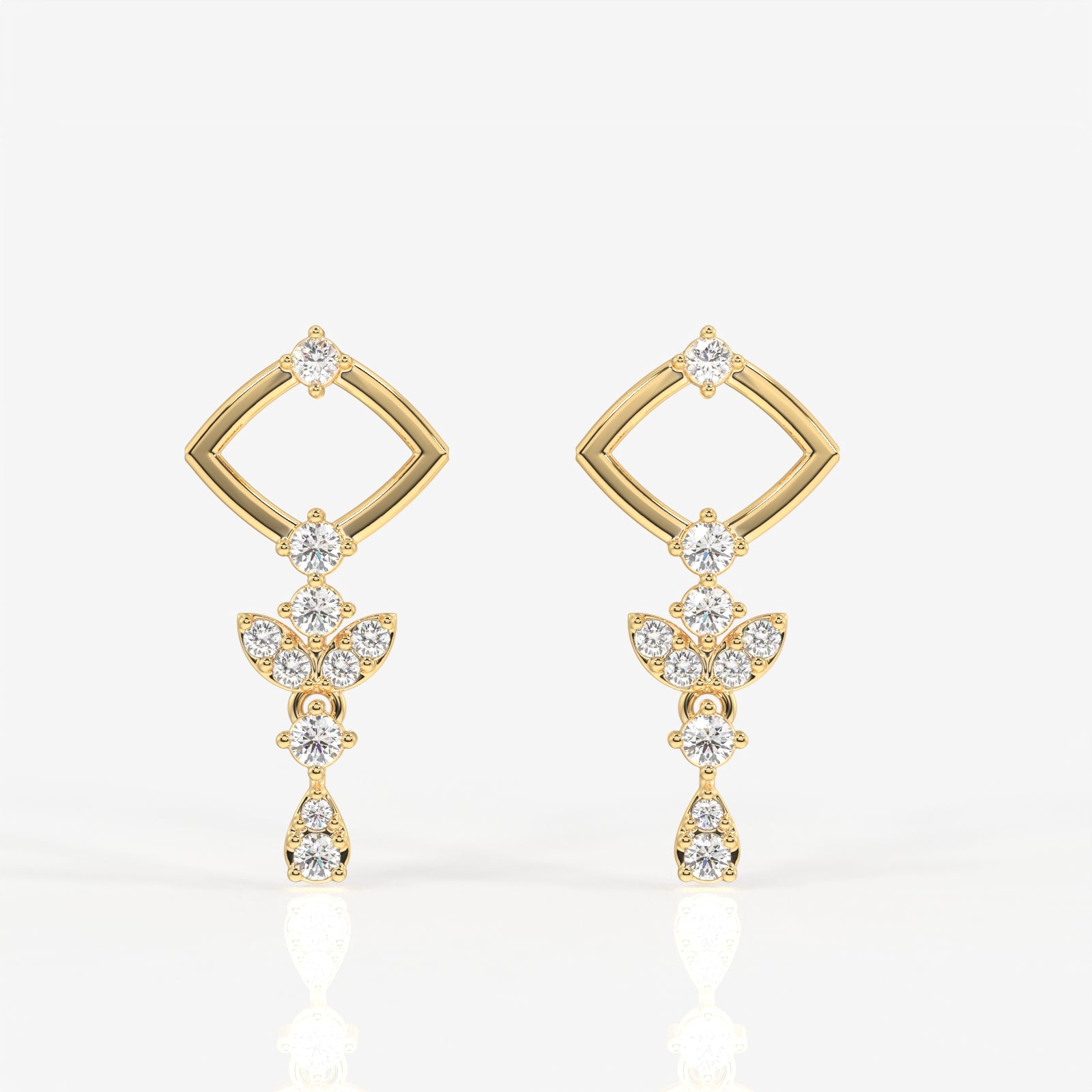
This is where expert craftsmanship comes into play. A magnificent stone deserves a magnificent setting. Imagine designing a piece where instead of a modest solitaire, you can now have a breathtaking center stone or a piece with a lot of detailing captured within. For those seeking bespoke pieces, the lab-grown diamonds allow more creativity and personalization in lab grown diamonds earrings.
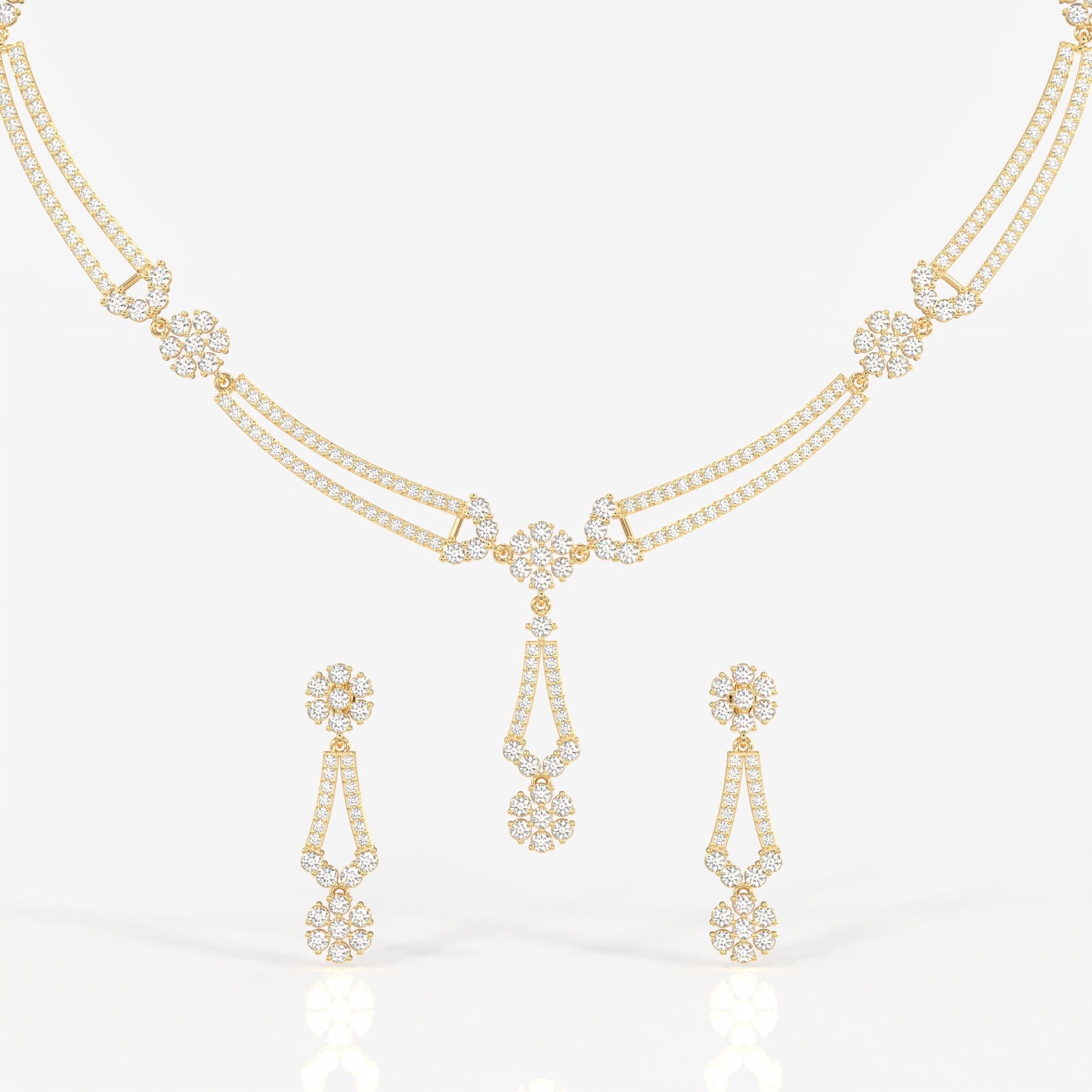
The selection is entirely up to you, whether you picture stunning lab-grown diamond rings with substantial center stones, masterfully crafted pairs of lab-grown diamond earrings, or attention-grabbing lab-grown diamond pendants. Think of a lab-grown diamond bracelet or a custom lab-grown diamond necklace. These pieces used to be painfully unattainable but are now luxuriously accessible. Even modern styles such as striking lab-grown diamond hoops or personalized lab-grown diamond bangles can be made with stunning stones without breaking the bank.
Persistent Misconceptions and Frequently Asked Questions About Diamonds Cultivated in the Laboratory
Myth: Are they “fake” diamonds? Fact: Absolutely not. They are physically and chemically identical to mined diamonds. They are 100% real diamonds. FTC has amended its guidelines to legally recognize them as such.
Myth: Will they lose their sparkle or get cloudy over time? Fact: Absolutely not. Their durability as diamonds will remain the same as a natural diamond.
Myth: Can a jeweler tell the difference just by looking at it? Fact: No. Without sophisticated gemological instruments capable of identifying particular growth patterns and trace elements associated with their formation, visual identification is impossible.
Myth: Are they certified? Fact: Yes. Trustworthy sellers like Caratbazaar issue independent certificates from IGI or GIA. They provide the 4Cs just like a natural diamond.
Caratbazaar view: We advocate for lab-grown diamonds
Caratbazaar is for empowerment through choice. We respect the tradition of natural diamonds, but we embrace the value and innovation of lab grown diamonds. We prioritize our clients, and we strive for absolute honesty and expertly informing clients and crafting beautiful, bespoke jewels that tell their individual journeys.
We perceive lab-grown diamonds to be the future of luxurious items that are easier to purchase. They enable us to provide you with greater beauty, greater brilliance, and greater size, while fulfilling the best ethical and eco-friendly practices. Every piece we make, whether it is a custom order or a ready to ship design, is made out of certified diamonds and BIS hallmarked metals. It is crafted by skilled Indian artisans which guarantees a legacy of trust and quality.
Conclusion:
In the end, the choice of whether to opt for a natural or lab grown diamond is devoid of any controversy.
· Choose a natural diamond if you are fascinated with the romance of a billion years of history, the tradition it brings and the rarity to a diamond in nature.
· Choose a lab grown diamond if you are looking for value while optimizing your budget for size and quality and are guided by strong ethical and environmental principles.
There is no wrong decision. They both are diamonds, beautiful, and timeless. What truly sets them apart is the narrative—whichever narrative you wish to adorn yourself with, that is entirely your choice.









